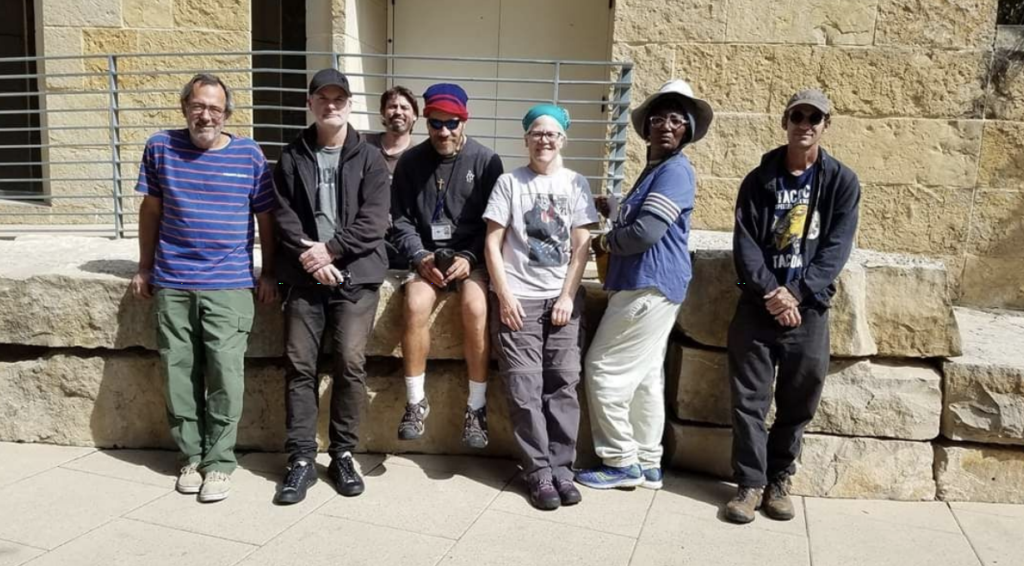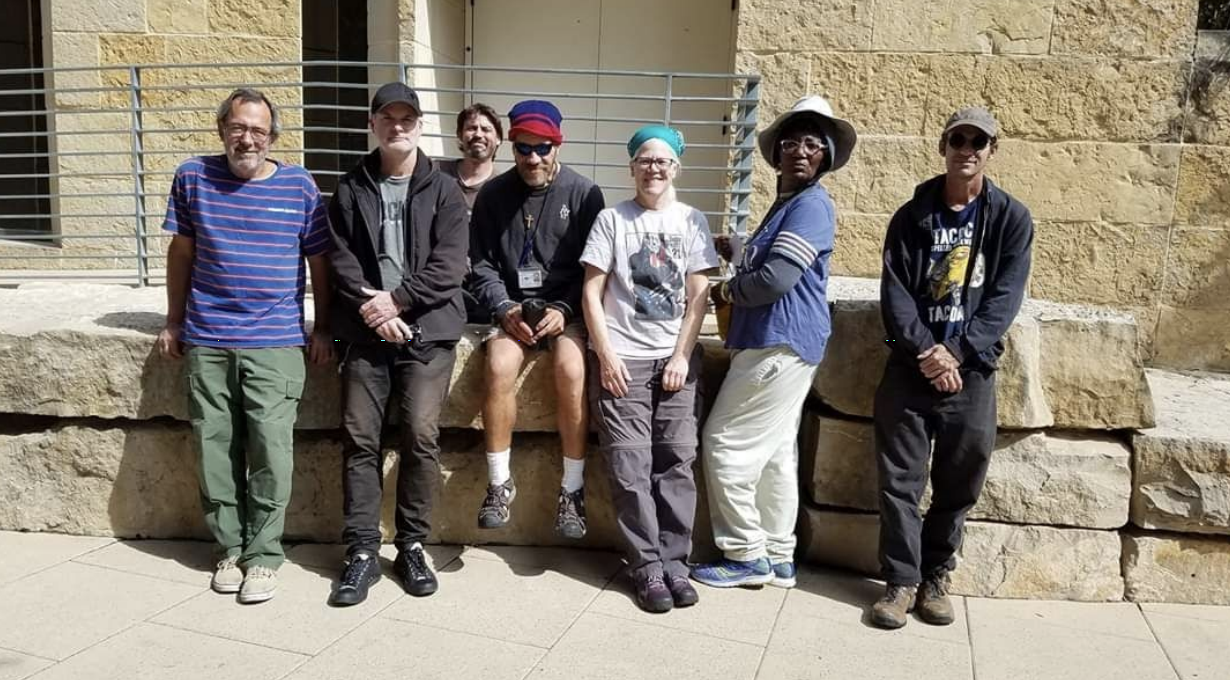(By JAMIE CONNATSER)
Austin issued its first stay-at-home order on March 24 due to the COVID-19 pandemic. But what if you didn’t have a home to stay in?
“If we housed people think this is hard, it has been impossible and torturing for some of the people on the street. They were already food challenged and laundry challenged and challenged in every way,” said Valerie Romness, the editor of the Challenger Street Newspaper, 95% of which is written by individuals experiencing homelessness in Austin.
Joseph Nicols, an Austin resident since 2011, has been homeless for more than nine years. He used to work as a designer and builder of playground equipment in San Diego before moving to Austin.
He explains what it’s like to be homeless in Austin during the COVID-19 pandemic.
“Many congregate meals are no longer serving. The few that are have had to change from hot meals to sandwiches, or other to-go foods. Restrooms are few and water resources are almost non-existent. Shower facilities are much more limited,” Nicols said.

Nicols said public showers are only open between 10 a.m. and 3 p.m., so people who are working don’t have access to those. Before COVID-19, there were showers in at least three city facilities that were open all day.
The communication is lacking in regards to what resources are available, according to Nicols. “I talked to two men today that did not know the Austin Recreation Center is open for showers.”
The City of Austin has responded to the pandemic by implementing several public health measures. They distributed portable toilets and hand-washing stations to known encampments, and there is a map on their website that helps people find their way to these facilities.
Food drop-offs are also happening once a week through the Eating Apart Together Initiative, according to the City of Austin website.
Both Nicols and Romness mention the need for healthier food. “Nutrition is lacking in a big way. Most of the food options are sandwiches, chips and snacks,” Nicols said.
All City Of Austin Neighborhood Center food pantry services are closed to walk-ins, but there is a fully-staffed emergency food helpline at (512) 972-5133, according to the City of Austin website.
Seeking shelter during the pandemic has changed as well.
The Salvation Army Social Service Center in downtown Austin provides co-ed shelter for up to 242 adults, but it closed on April 13 due to 12 people who tested positive for the coronavirus. All residents were moved to a city-leased hotel, according to KUT. After deep cleaning and a waiting period of three weeks, the shelter reopened on Monday, May 4.
Next door to the Salvation Army, the Austin Resource Center for the Homeless (ARCH) provides temporary shelter for men experiencing homelessness. The ARCH adjusted their operations to sleep fewer people at night, partly due to the necessity for six feet of separation between beds, according to their facebook page. Fortunately, 80% of the people staying at the ARCH have been tested for COVID-19, and all tests came back negative, according to KVUE.
The emotional toll of COVID-19 is also a consideration for people who are homeless. Nicols said there is a lot of uncertainty, even for people who receive checks from the government.
“Many have taken it personal, that no one will talk to them,” Romness said. “Ask the readers to not be afraid of homeless people. They are starving for attention, food and for safety. We are all in this together.”




